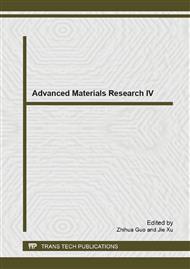p.3
p.8
p.13
p.18
p.22
p.27
p.32
p.37
p.45
Machinability Assessment of Aluminium-Graphite-Silicon Carbide Hybrid Composites
Abstract:
Aluminium silicon carbide particulate composites have wide ranging applications in automobile, aerospace and military industries because of their attractive properties such as high strength-to weight ratio, high wear resistance, high temperature stability etc. From the machining point of view, these are one of the most difficult-to-machine materials, primarily due to the presence of SiC reinforcements causing an excessive wear of cutting tools during machining. On the other hand aluminium-graphite composites are widely used in tribological applications because of their excellent antifriction properties, wear resistance and antiseizure characteristics. Investigations have been carried out in this work to assess the machinability of aluminium matrix composites containing both SiC and graphite particulates as reinforcements. Turning experiments have been conducted on Aluminium-Graphite-Silicon Carbide hybrid composites using Carbide and PCD tool inserts to determine the flank wear. Experiments have been carried out based on Central Composite Design approach.
Info:
Periodical:
Pages:
22-26
Citation:
Online since:
February 2014
Authors:
Price:
Сopyright:
© 2014 Trans Tech Publications Ltd. All Rights Reserved
Share:
Citation:


